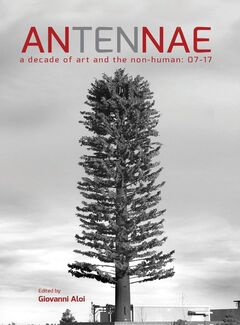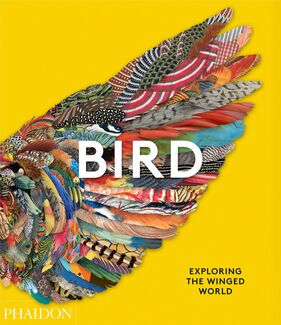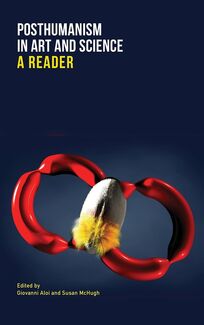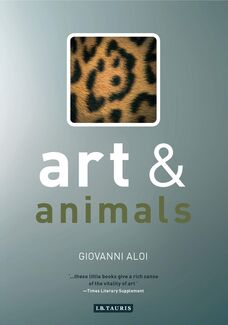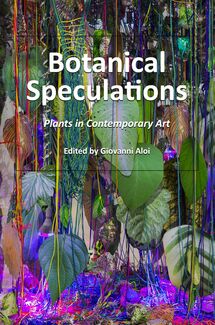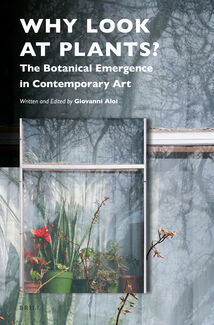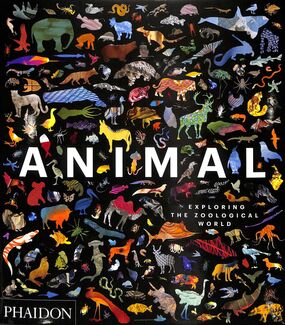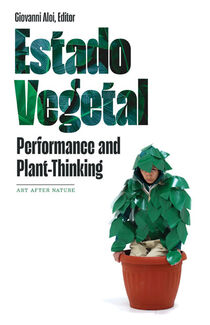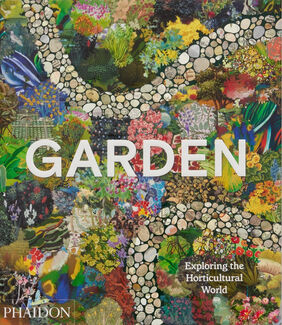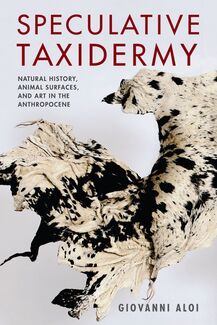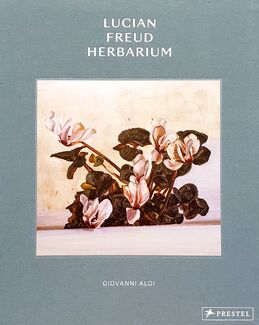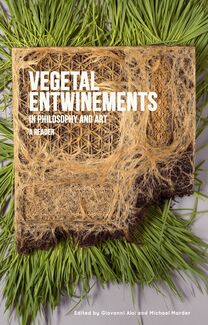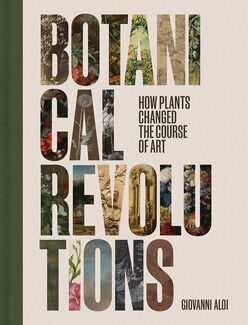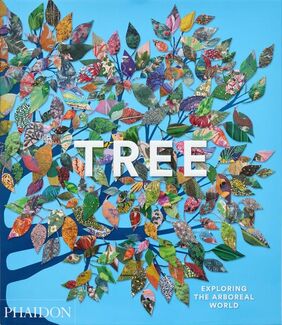

Giovanni Aloi
Professor, Adjunct
Contact
Bio
Dr. Giovanni Aloi (he/him) is an author, educator, and curator specializing in the representation of nature and the environment in art. He is the Editor in Chief of Antennae: The Journal of Nature in Visual Culture. Aloi is the author of Art & Animals (2011), Speculative Taxidermy: Natural History, Animal Surfaces, and Art in the Anthropocene (2018), Why Look at Plants? The Vegetal Emergence in Contemporary Art (2019), Lucian Freud – Herbarium (2019), and the editor of Posthumanism in Art and Science (2020), Vegetal Entwinements in Philosophy and Art (2023), Estado Vegetal: Performance and Plant Thinking (2023), I’m Not an Artist: Reclaiming Creativity in the Age of Infinite Content (2025), Lawn (2025). Aloi has contributed to BBC radio, PBS TV, worked at Whitechapel Art Gallery and Tate Galleries in London, and currently is USA correspondent for Esse Magazine. He has curated exhibitions in the US and Europe and is co-editor of the University of Minnesota Press series Art after Nature.
Education: BA, 1997 Fine Art—Theory and Practice, Milan—S. Marta Fine Art College; PgD, 2003 Art History, Goldsmiths University of London; MA, 2004 Visual Cultures, Goldsmiths University of London; PGCE, 2008 Institute of Education, London; Ph.D., 2014 Goldsmiths University of London.
Awards: 2024, DCASE Grant for Urban+Nature Sonic Pavilion, Chicago; 2024, Terra Foundation Grant for Materialities exhibition at Driehaus Museum; 2022, recipient of SAIC Faculty Enrichment Grant; 2020, Karen and Jim Frank Excellence in Teaching Award; 2019, Lucian Freud Herbarium listed among Best Art Books by The Evening Standard, Hyperallergic, Arts Desk, and The New European; 2019, Lucian Freud Herbarium nominated for Berger Art History Award Prize; 2018, Why Look at Plants? – Outstanding Academic Titles Choice Award; 2019, recipient of SAIC Faculty Enrichment Grant; 2018, recipient of the 2018 Literary Lions Award for Art History Research; 2017, recipient of SAIC Diversity Infusion Grant; 2016, recipient of SAIC Faculty Enrichment Grant; 2015, recipient of EAGER Grant 2015 (early–concept grants for exploratory research), role: mentor to graduate students researching plants in contemporary art; 2015, recipient of SSHRC (Social Sciences and Humanities Research Council of Canada) Grant 2015-2020. Collaborative five years project titled Digital Animalities focusing on animal presence in digital media.
Publications:
Monographs: Contracted: Aloi, G. Avant-Gardeners (London: Prestel) 2027; Contracted: Aloi, G. Land Art, Art of the World series (London and New York: Thames & Hudson) 2026; Forthcoming: Aloi, G. Lawn (London: Bloomsbury) 2025; Forthcoming: Aloi, G. I Am Not an Artist (London: Bloomsbury) 2024; Forthcoming: Aloi, G. Botanical Revolutions (Los Angeles: Getty) 2024; Aloi, G. Lucian Freud Herbarium (New York: Prestel) 2019; Aloi, G. Speculative Taxidermy: Natural History, Animal Surfaces, and Art in the Anthropocene (New York: Columbia University Press) 2017; Aloi, G. Art & Animals, part of the series ‘Art &…’ (London: I B Tauris) 2011.
Edited Collections: Aloi, G. (Advisor and Co-Author) Butterfly: Exploring the Entomological World (London: Phaidon) 2025; Aloi, G. (Advisor and Co-Author) Tree: Exploring the Arboreal World (London: Phaidon) 2022; Aloi, G. (Co-Author) Garden: Exploring the Horticultural World (London: Phaidon) 2023; Aloi, G. (Ed.) Manuela Infante: Estado Vegetal (Minneapolis: University of Minnesota Press) 2023; Aloi, G. And Marder, M. (Eds.) Vegetal Entwinements in Philosophy and Art (Boston: MIT) 2022; Aloi, G. (Co-Author) Ocean: Exploring the Marine World (London: Phaidon) 2022; Aloi, G. (Co-Author) Bird: Exploring the Ornithological World (London: Phaidon) 2021; Aloi, G. and McHugh, S. (Eds.) Posthumanism in Art and Science: A Reader (New York: Columbia University Press) 2021; Aloi, G. (Co-Author) Flower: Exploring the World in Bloom (London: Phaidon) 2020; Aloi, G. (Consultant Editor and Co-Author) Animal: Exploring the Zoological World (London: Phaidon) 2019; Aloi, G. (Ed.) Botanical Speculations (Cambridge: Cambridge Scholars) 2019; Aloi, G. (Editor and Principal Author) Why Look at Plants? (Leiden: Brill) 2018; Aloi (Ed.) Antennae 10: A Decade of Art and the Non-Human 07-17, (AntennaeProject/Forlaget 284) 2017.
Essays in Edited Collections and Catalogs (selected): Forthcoming: ‘In Conversation’ in Julian Montague, exhibition catalog, 2024; Forthcoming: ‘To Hear and See Vegetal Being’ in Lerin/Hystad, exhibition catalog, 2024; ‘Land Politics: Decolonizing, Re-envisioning, Repairing’ in Soils Matter, published by University of Bolzano and PAV Tourin in collaboration with Bruno Books; ‘Speculative Phytopoetics: Towards Vegetal Kinship’ in Prudence Gibson (ed) The Herbarium Tales, Open Humanities Press, 2024; ‘Patterns of Human-Vegetal Desire’ in Diana Scherer: Patterns of Human-Vegetal Desire, exhibition catalog, 2023; ‘Towards the last Laocoön’ in Everyone Talks About the Weather, exhibition catalog, Fondazione Prada, Venezia, 2023; ‘Lucian Freud: Plant Portraits’ in Lucian Freud: Plant Portraits, exhibition catalog, Garden Museum, London 2022; ‘Anicka Yi: The Ferality of Scent’ in Anicka Yi – Metaspores, exhibition catalog, Hangar Bicocca, Milan, Italy, 2022; ‘Vegetal Attunements’ in The Botanical Turn, exhibition catalog (London Ontario: McIntosh Gallery) 2022.
Editorial work:
Plant Perspectives, Member of Editorial Board, White Horse Press, since July 2023.
Art after Nature, Co-Editor with Caroline Picard, University of Minnesota Press Book Series, since August 2018: Art after Nature exposes new aesthetic territories defined by the recent ontological turn in the humanities. In the face of the unprecedented changes defining our relationships with the natural world, modes of critical and political artistic engagement are adapting in response. Books published in this series engage with the politics of the Anthropocene as a concept to problematize recent philosophical waves like Animal Studies, Posthumanism, and Speculative Realism in art and writing.
Antennae, The Journal of Nature in Visual Culture, Editor in Chief, since September 2006: Antennae is free to the public, non-funded by institutions, and not supported by grants or philanthropists. The Journal’s format and contents are informed by the concepts of ‘knowledge transfer’ and ‘widening participation’. Its independent status has allowed us to give a voice to scholars and artists who were initially not taken seriously by mainstream publishers.
Exhibitions:
A Tale of Today: Materialities: Exhibition of work by 13 artists in response to selected material histories from Driehaus Museum in Chicago, 2025.
The UrbanNature Sonic Pavilion: An exhibition of original soundworks to be showcased on the one-of-a-kind multi-channel system of Chicago’s Jay Pritzker Pavilion in Millennium Park for summer 2024.
Lucian Freud: Plant Portraits: Exhibition on Lucian Freud’s paintings of plants for the Garden Museum in London based on the book Lucian Freud Herbarium, 2022.
Animal Crossings: Exhibition co-curated with artist Maria Bronkema for Fountain House Gallery in NYC, 2022.
Leftover and Over: Exhibition at Spring Break Art Show in NYC featuring the work of artists Andrew Orlosky and Lesley Bodzy, 2022.
Earthly Observatory: Exhibition on art and the Anthropocene curated in collaboration with Dr. Andrew Yang for the Faculty Curated Projects Program at SAIC, 2021.
Digital Animalities: Exhibition on animals and the digital interface held in Toronto at John B. Aird Gallery and Contact Gallery between October 30 and December 15, 2018. Commissioned by the Social Sciences and Humanities Research Council of Canada, 2018.
Plants, Animals, Machine, Object!: Program of short films co-curated for Sector 2337, Chicago, 2015.
Animals on Film: Program of short films curated for ISAZ2012, Cambridge, 2012.
Animal Acoustics: Online exhibition in conjunction with the publication of Antennae’s issue n.27 titled ‘The Acoustic Animal,’ 2012.
Personal Statement
My publications, teaching, and curatorial work center on the interdisciplinary fields of human-animal studies, critical plant studies, posthumanism, new materialism, bio art, and environmentalism. Drawing on the theoretical frameworks and methodologies these disciplines offer, I critically examine and challenge outdated Western conceptions of nature. My practice seeks to deconstruct the cultural entanglements of colonialism, materiality, race, gender, and representation, fostering a decolonized understanding of our present.
My lectures adopt a global perspective, informed by indigenous and embodied knowledges, alongside both Western and Eastern philosophical traditions. In the face of climate change and the sixth mass extinction—challenges that demand ethical reflection across interconnected local and global scales—my courses explore the multicultural interdependencies that underpin more sustainable futures.
To study the representation of nature in art today is to embrace a holistic and global perspective—one that invites inquiry, fosters critical rethinking, and opens pathways for re-envisioning our relationship with the natural world.
I am a proud first-generation college student, immigrant, son of immigrants, and member of the LGBTQA+ community.
